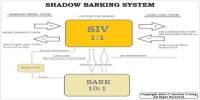Bank reserves are the minimum cash reserves that financial institutions must keep in their vaults at any given time. These are a commercial bank’s cash holdings physically held by the bank, and deposits held in the bank’s account with the central bank. It equals the cash physically available with the bank plus the amount it has deposited with the central bank. These are the cash minimums that must be kept on hand by financial institutions in order to meet central bank requirements. The minimum cash reserve requirements for financial institutions in each country are set by the central bank of that country. These excess reserves tend to rise in bad times and fall in good times.
Under the fractional-reserve banking system used in most countries, central banks typically set minimum reserve requirements that require commercial banks under its purview to hold cash or deposits at the central bank equivalent to at least a prescribed percentage of their liabilities, such as customer deposits. The bank cannot lend the money but must keep it in the vault, on-site or at the central bank, in order to meet any large and unexpected demand for withdrawals. Such sums are usually termed required reserves, and any funds above the required amount are called excess reserves. These reserves are prescribed to ensure that, in the normal events, there is sufficient liquidity in the banking system to provide funds to bank customers wishing to withdraw cash. Even when there are no reserve requirements, banks often as a matter of prudent management hold reserves in case of unexpected events, such as unusually large net withdrawals by customers or bank runs.
In general, banks do not earn any interest on their reserves. Bank reserves are essentially an antidote to panic. The Federal Reserve obliges banks to hold a certain amount of cash in reserve so that they never run short and have to refuse a customer’s withdrawal, possibly triggering a bank run. Funds in banks that are not retained as a reserve are available to be lent, at interest. The amount of bank reserves relative to total deposits is a measure used to assess a bank’s risk. The higher the bank reserves are, the less risk-taking a bank is and vice versa.
Formula
Bank Reserves = Bank’s Deposit at Central Bank + Vault Cash
Bank Reserves = Required Reserves + Excess Reserves
A bank reserve is a portion of a bank’s deposits that are set aside in a liquid account to ensure that the bank has enough cash on hand to fulfill withdrawal requests. In bookkeeping, reserves are ordinarily part of the equity of a company. Bank reserves, on the other hand, are part of the bank’s assets. In a bank’s annual report, bank reserves are referred to as “cash and balances at central banks”. Bank reserves decrease during periods of economic expansion and increase during recessions.
















